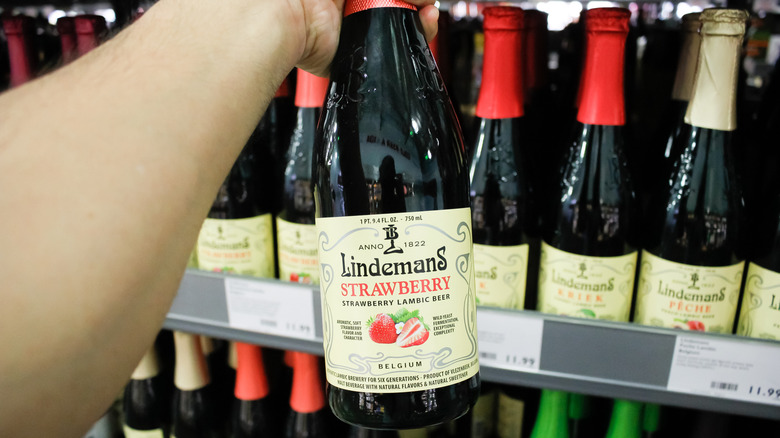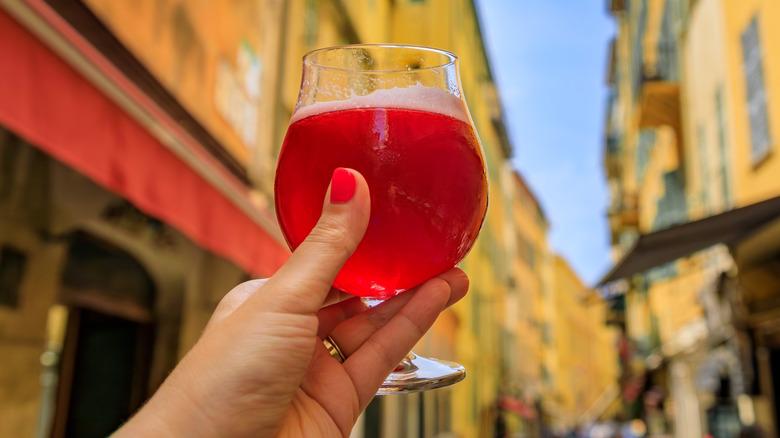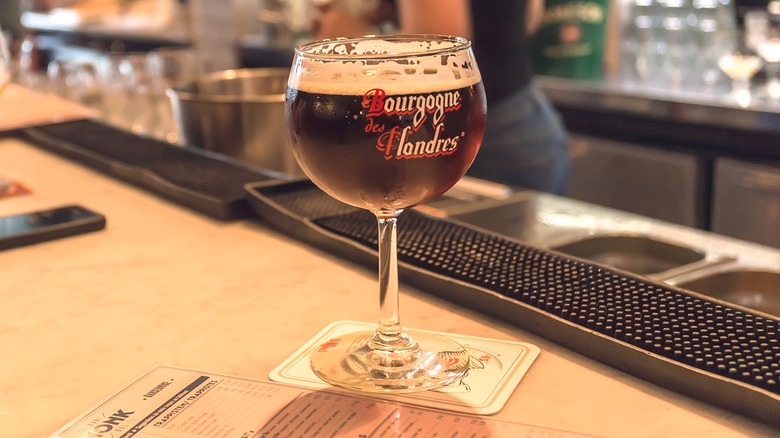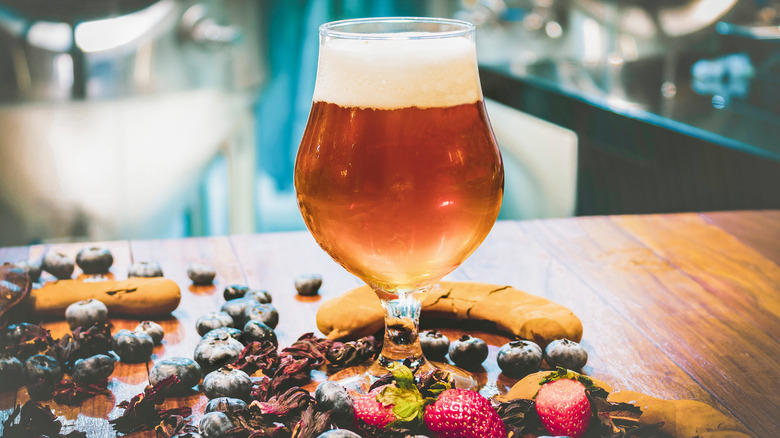How Lambic Beers Got Their Reputation For Being Super Sweet
Lambic beer is one of those drinks that has become a victim of snobbery. It's common for beer and wine connoisseurs alike to turn their noses up at them for being overly sweet, soda-like, or akin to alcopops. While dismissal of an entire drink category might seem harsh, the cloyingly sweet quality is applicable to some lambics on the market.
These super sweet lambics represent just one end of a wide spectrum featuring a beverage with varied flavor profiles. For example, Lindemans has become the sole touch point many people have for the drink; in particular, its fruited lambics. These lambics have been readily available across the United States for decades. But while some of the offerings from the brewery have come to define the drink, Lindemans offers a full range of lambics which lean into other characteristics like the sour funk that can be found in the brew. The cotton candy or fairy floss level Lindemans lambics that come to mind for some beer fans only skim the surface of the category as a whole.
How sweetness enters into lambic brewing
To understand how sweet lambics have taken over the market, it's important to understand how they are made. Water, wheat, and brew-essential malted barley are combined, heated, and filtered to create wort, which is then cooked and left to cool overnight in an open tray. It's at this point that local plant life naturally infuses the wort with wild yeast in a hands-off process known as spontaneous fermentation. The brew is then housed in stainless steel vats for a few months, then matured in barrels for as long as several years.
The wild yeast used in the lambic brewing process gives the end result a sour flavor that's similar to sourdough bread — not the extremely sweet flavor you might be familiar with. While hops lend bitter flavors to beer including lambic, there is no discernible hop flavor to a lambic. Some lambics are gueuze, which means that they are created by combining an older, barrel-aged lambic with a younger lambic which still contains active yeast and sugars. This pairing enables the beverage to continue to ferment in the bottle. But no part of this process naturally creates a sweet product. Sweet lambics come from additional ingredients added later in the process. Still, sweetening lambic is definitely not a new idea. In the 1800s, drinkers who didn't like the sour nature of lambic would add a little brown sugar to sweeten it up.
Does a lambic have to taste fruity?
Some of the most common lambics that you can find on the shelves in the United States are fruited ones. And it's possible some beer drinkers have never have tried a lambic that doesn't have that sweeter, fruity element. You'll most commonly see pêche, kriek, framboise, cassis, and pomme (peach, cherry, raspberry, black currant, and apple, respectively). And even though fruited lambics can be very sweet, they can also feature complementary sour or dry notes. But fruit is not a necessary part of lambic brewing and you can find plenty of excellent lambics that don't have fruit flavors if you know where to look. The move towards fruited lambic was a natural evolution of the earlier attempts to sweeten the beverage. Adding fruit juice to lambics became a popular move after World War II and through the late 1900s.
Fruited lambics can have as much as 30% fruit juice added to them at bottling which leads to a sweeter beverage as the end result. However, the fruit can also be part of the brewing process. The fruit or the fruit juice is added to young lambics that still contain active yeast and sugar, and the blended brew then macerates the fruit and continues to ferment as it matures.
Why lambic has a super sweet reputation
It might be easy to assume that the most prevalent version of a thing is the best example of it. (Lindemans framboise, for example.) But there is a broad spectrum to lambics, just as there is for beer, wine, and cider. And to get a full understanding of the category you need to sample a good range of these beverages.
While it used to be harder to find different lambics in the United States, that's becoming less of the case. With the rise in craft brewing over the recent decades, offerings in the U.S. have become much more expansive, including access to a wide range of lambics — not just the super sweet ones. Ask for the available options at your local beer store where they likely already stock some traditional lambic offerings, or would be happy to order some for you.



